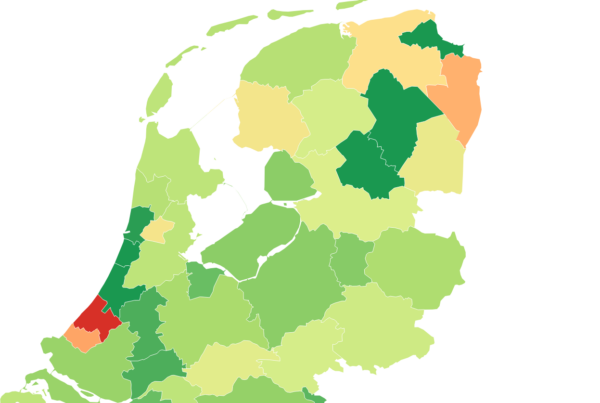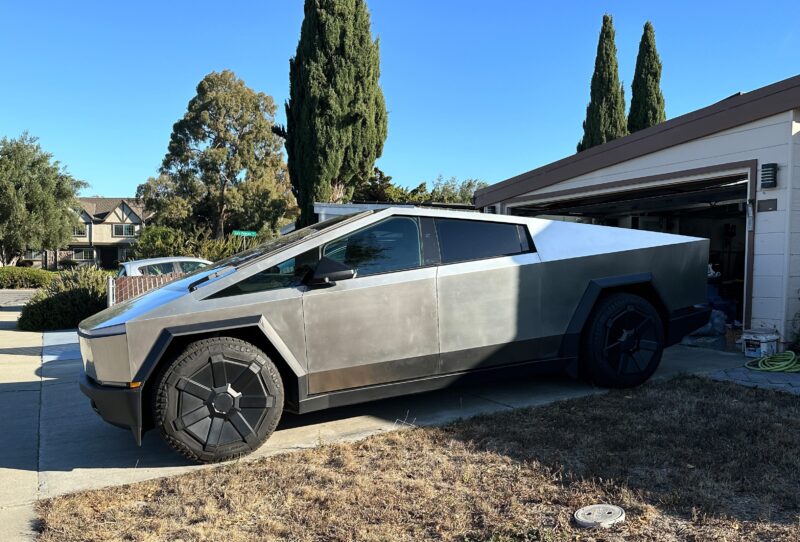- California utility company Pacific Gas and Electric (PG&E) has notified 850,000 customers across 36 counties that they could lose power this weekend.
- The blackouts are meant to reduce wildfire risk amid warm, dry, windy conditions. The Kincade Fire in Sonoma County has burned nearly 22,000 acres.
- PG&E told state regulators that a broken jumper cable on one of its transmission towers may have played a role in the Kincade Fire, according to the San Francisco Chronicle.
- As the climate warms, California’s wildfire season is getting longer, and weather that brings a high risk of wildfires is becoming more common.
- PG&E says blackouts are the company’s new strategy to minimize fire risk. Earlier this month, the company cut power to more than 1 million California residents ahead of similar conditions.
- Visit Business Insider’s homepage for more stories.
Some 2 million Californians may be in the dark this weekend, including 93,000 Sonoma County residents who live near the Kincade Fire, which has burned 21,900 acres.
The blackout is expected affect 850,000 customers across 36 California counties, including most of the San Francisco Bay area, California utility company Pacific Gas and Electric (PG&E) said Friday afternoon.
This is the third time this month that PG&E has announced plans to shut off power to parts of its electrical grid in order to minimize the risk that sparking wires could start fires amid hot and windy weather conditions. Sparking wires were found to be the cause of last year’s record-breaking Camp Fire, which razed more than 18,800 structures and killed 86 people in November.
A preemptive blackout earlier this week even included Sonoma County, but PG&E has said that a broken jumper cable on one of its high-voltage transmission towers there may still have been involved in sparking the Kincade Fire. The tower remained online in Geyserville, where the fire started.
Blackouts could be the new normal
In early October, a forecast of intense wind and dry heat led PG&E to preemptively cut power to more than 800,000 customers. In that outage, the company shut down nearly 100 transmission lines that stretched across 2,500 miles, the California Public Utilities Commission reported.
More than 1 million northern California residents were impacted, with an estimated total of $2.5 billion in economic losses, according to CNBC.
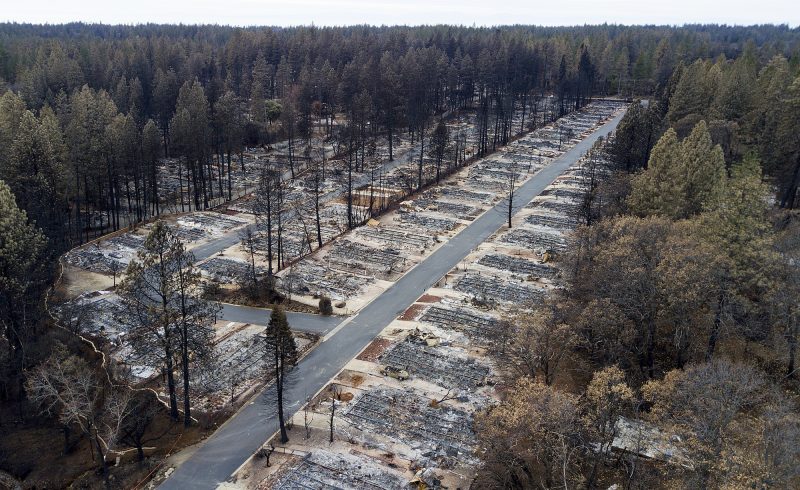
As the world continues to warm, wildfires are expected to keep get bigger and more frequent. So PG&E chief executive Bill Johnson has indicated that blackouts might be the company's go-to strategy when risk is high.
"We'll likely have to make this kind of decision again in the future," he said at a news conference on October 10. That situation has already arisen twice in the two weeks since that statement.
But even though PG&E cut power to many Sonoma County customers ahead of the Kincade Fire, the company left high-voltage lines that ferry power through to other areas online, according to the Wall Street Journal.
Why PG&E keeps cutting power
After investigators determined that the Camp Fire - the deadliest and most destructive in California history -originated from PG&E power lines, the utility company was to pay out damages to home- and business-owners impacted by the disaster. PG&E, which is not state-owned or -affiliated, reached an $11 billion settlement last month, amid bankruptcy proceedings.
Lenya Quinn-Davidson, a fire adviser for Humboldt County, told Business Insider that the weather in Northern California this month has mirrored the situation that preceded that 2018 blaze.
"Basically the Camp Fire happened last year during similar conditions," she said, adding, "PG&E lost so much through those fires that they don't want to take those risks again."
However, she also noted that because California got much more rain this year than the last two, the risk levels aren't identical.
"I don't think it's the same situation we had these last two years when vegetation was drier," she said. "I was a little surprised that they did what they did based on the conditions we had."
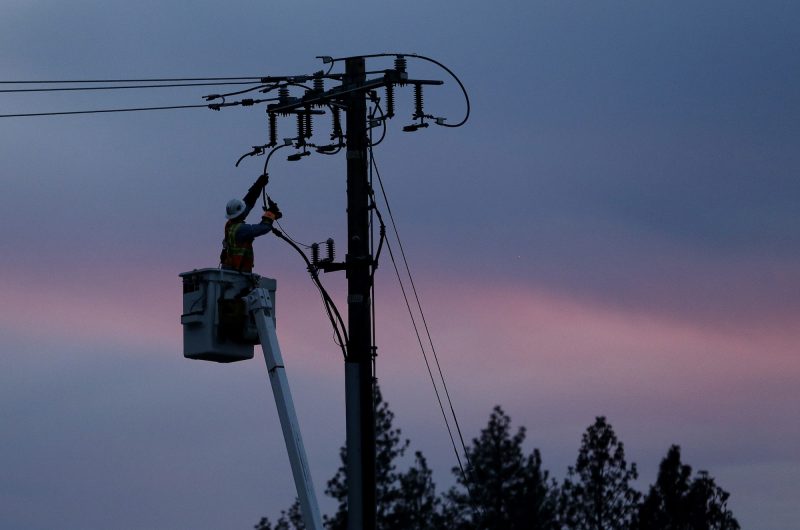
Quinn-Davidson, who lives in Humboldt County, said she lost power herself on October 9.
"It was a really strange post-apocalyptic feeling. People were backed up in traffic jams, filling up on gas, food, and water," she said of her town, adding, "we can't shut down the entire state of California every time we have strong winds."
The connection between climate change and wildfires
When greenhouse gases from the burning of fossil fuels enter the atmosphere, they trap more heat on the planet, causing Earth's temperature to rise. July was the hottest month ever recorded, and 2019 overall is on pace to be the third-hottest on record globally, according to Climate Central. Last year was the fourth warmest, behind 2016 (the warmest), 2015, and 2017.
Individual wildfires can't be directly attributed to climate change, but accelerated warming increases their likelihood.
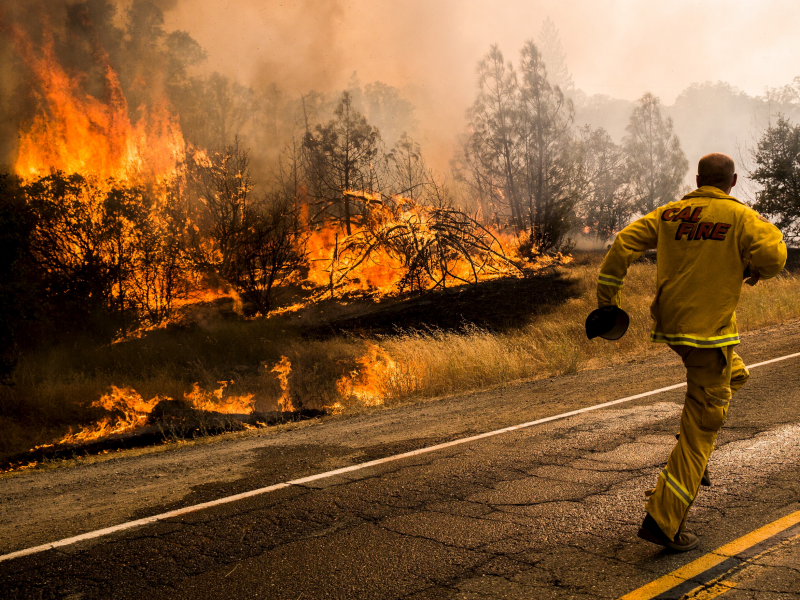 Foto: A Cal Fire firefighter races to move a truck before it's overrun by the Rocky Fire in Lake County, California, in 2015.sourceMax Whittaker/AP
Foto: A Cal Fire firefighter races to move a truck before it's overrun by the Rocky Fire in Lake County, California, in 2015.sourceMax Whittaker/AP
"Climate change, with rising temperatures and shifts in precipitation patterns, is amplifying the risk of wildfires and prolonging the season," the World Meteorological Organization (WMO) said in a July release.
Exceptionally hot and dry conditions, the organization added, create ideal conditions for wildfires across North America. That's because warming leads winter snow to melt sooner, and hotter air sucks away the moisture from trees and soil, leading to dryer land. Decreased rainfall also makes for parched forests that are prone to burning.
"It's not just California - we are having more large, high-intensity fires in many parts of the world," Keith Gilless, a professor in the forestry program at the University of California, Berkeley, told Business Insider. These increases in size and intensity are at least partially due to climate change, he added.
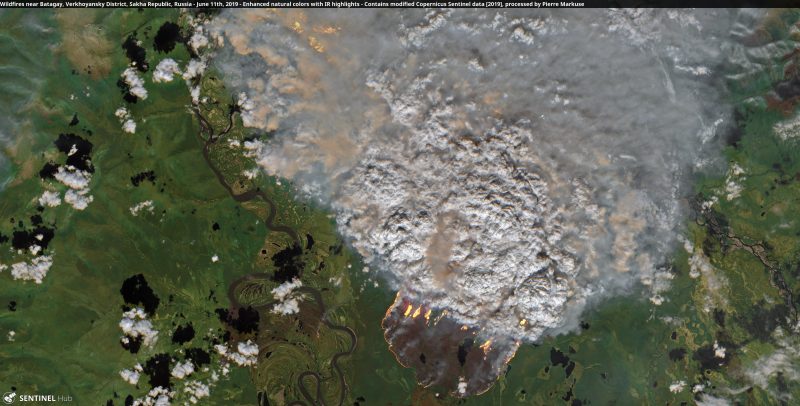
This summer, swaths of the Arctic from Siberia to Greenland burned so intensely that the blazes could be seen from space. The European Union's Copernicus Atmosphere Monitoring Service said its team observed more than 100 intense and long-lasting fires in the Arctic Circle since the start of June.
California fires are getting bigger
Large wildfires in the US now burn more than twice the area they did in 1970. A recent study found that the portion of California that burns from wildfires every year has increased more than five-fold since 1972.
Nine of the 10 biggest fires in the state's history have occurred since the year 2003.
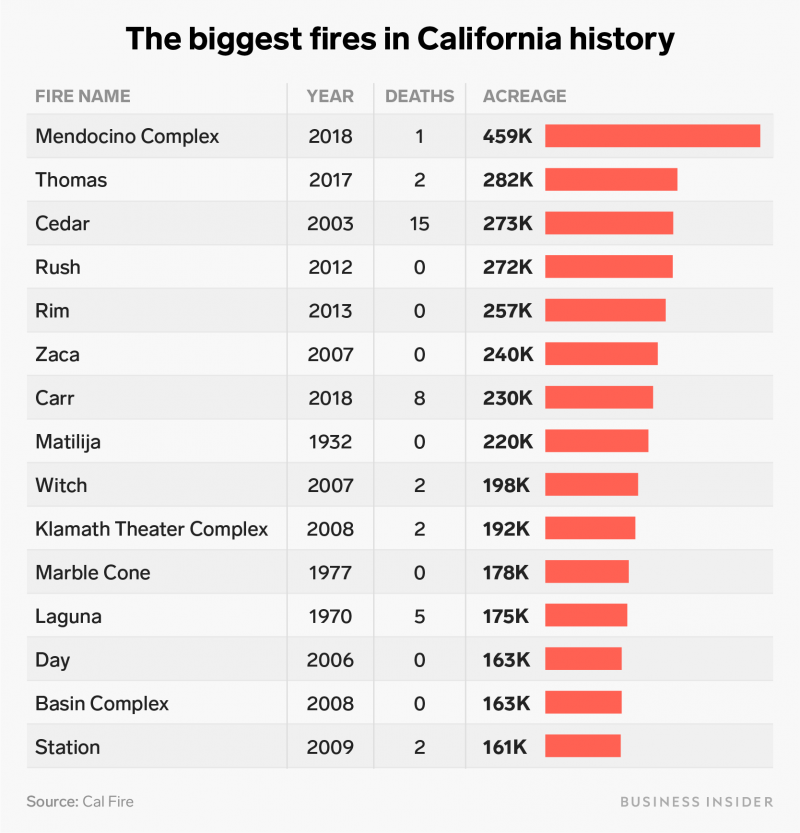
"No matter how hard we try, the fires are going to keep getting bigger, and the reason is really clear," climatologist Park Williams told Columbia University's Center for Climate and Life. "Climate is really running the show in terms of what burns."
According to Witter, the Woolsey fire was a prime example of that. The blaze burned more than 1,600 acres in Los Angeles and Ventura counties in November 2018 (while the Camp Fire was raging in the north). The drought that hit California from 2011 to 2017 contributed to that fire, she said, because dry conditions killed ground vegetation in the area, and that dry material provided fuel for the blaze.
California is seeing longer wildfire seasons
To make matter worse, wildfire season in the western US getting longer, Quinn-Davidson said. That too, is related to climate change, because dying trees and vegetation are drying out (and becoming more available to burn) sooner than they used to.
"Fire season in the west has increased by up to two months in the last 100 years," she said.
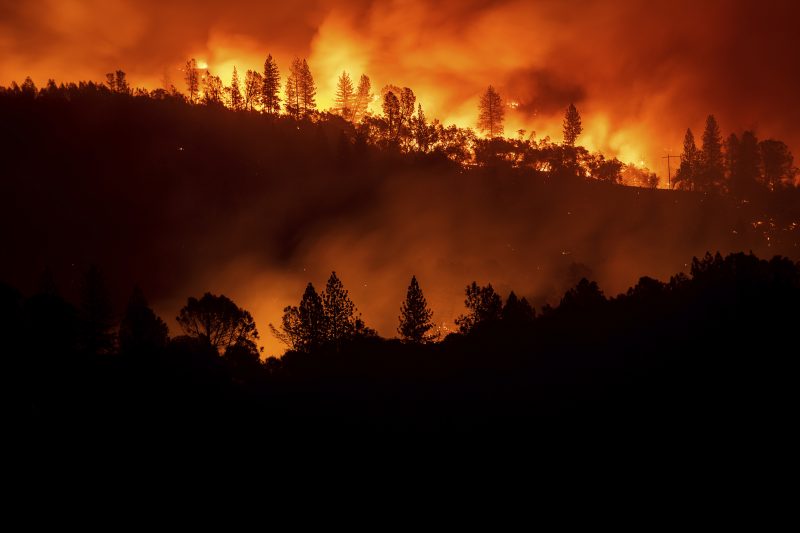
In the western US, the average wildfire season is 78 days longer than it was 50 years ago, and that's likely because of climate change, the Center for Climate and Energy Solutions reported.
What's more, California's fires also destroying more buildings and infrastructure than they did in the past. All but one of the state's 10 most destructive fires have occurred since 2003.
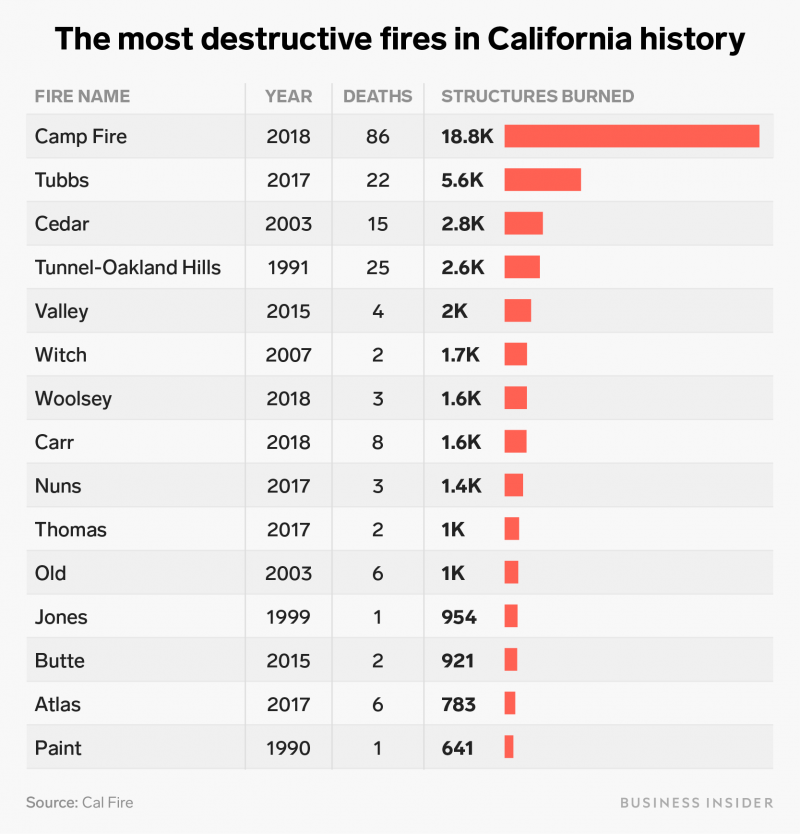
How to decrease wildfire risk in California
Witter, Gilless, and Quinn-Davidson all said that shutting off power lines during times of high fire risk isn't the right, or even the only, solution that should be on the table.
"The PG&E shutdown seems to be a sledgehammer instead of a scalpel," Marti Witter, a fire ecologist with the National Park Service in Thousand Oaks, California, told Business Insider.
Quinn-Davidson said that although power lines do spark fires, minimizing that risk is only "one small piece of the puzzle."
"Yes, utilities were responsible for the Camp Fire and Wine County Fire, but there's a whole host of reasons why fires start and continue burning," she added.
It's all about managing the fuel, Quinn-Davidson said. That means clearing out dead trees and vegetation from under power lines and in dense, old-growth forests. This could be done by hand or via controlled, prescribed burns.
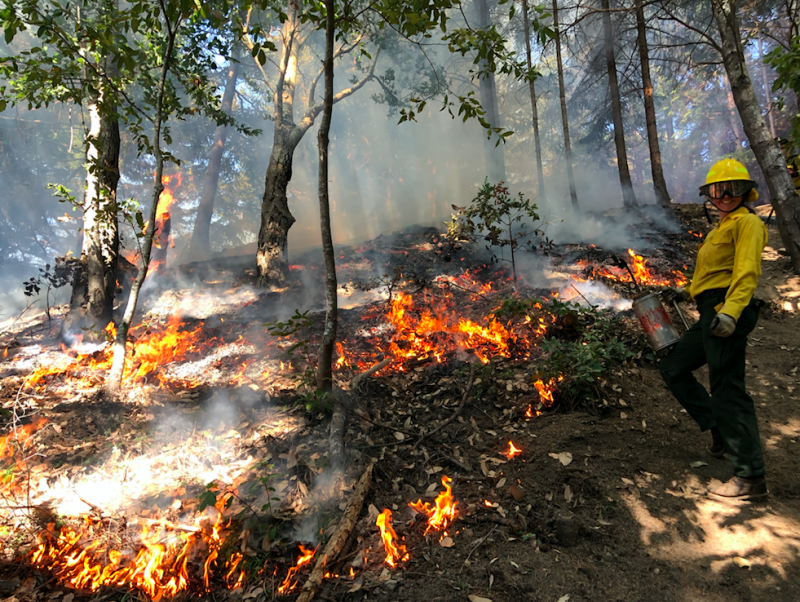
Other risk mitigation measures, Witter said, include improving homes in at-risk zones by "hardening" them - making the structures more resilient to fire by using non-flammable building materials, for example. Better land-use planning to limit housing development in fire-prone locations could help, too.
"We're not going to have a silver bullet that solves the fire problem," Quinn-Davidson said.






